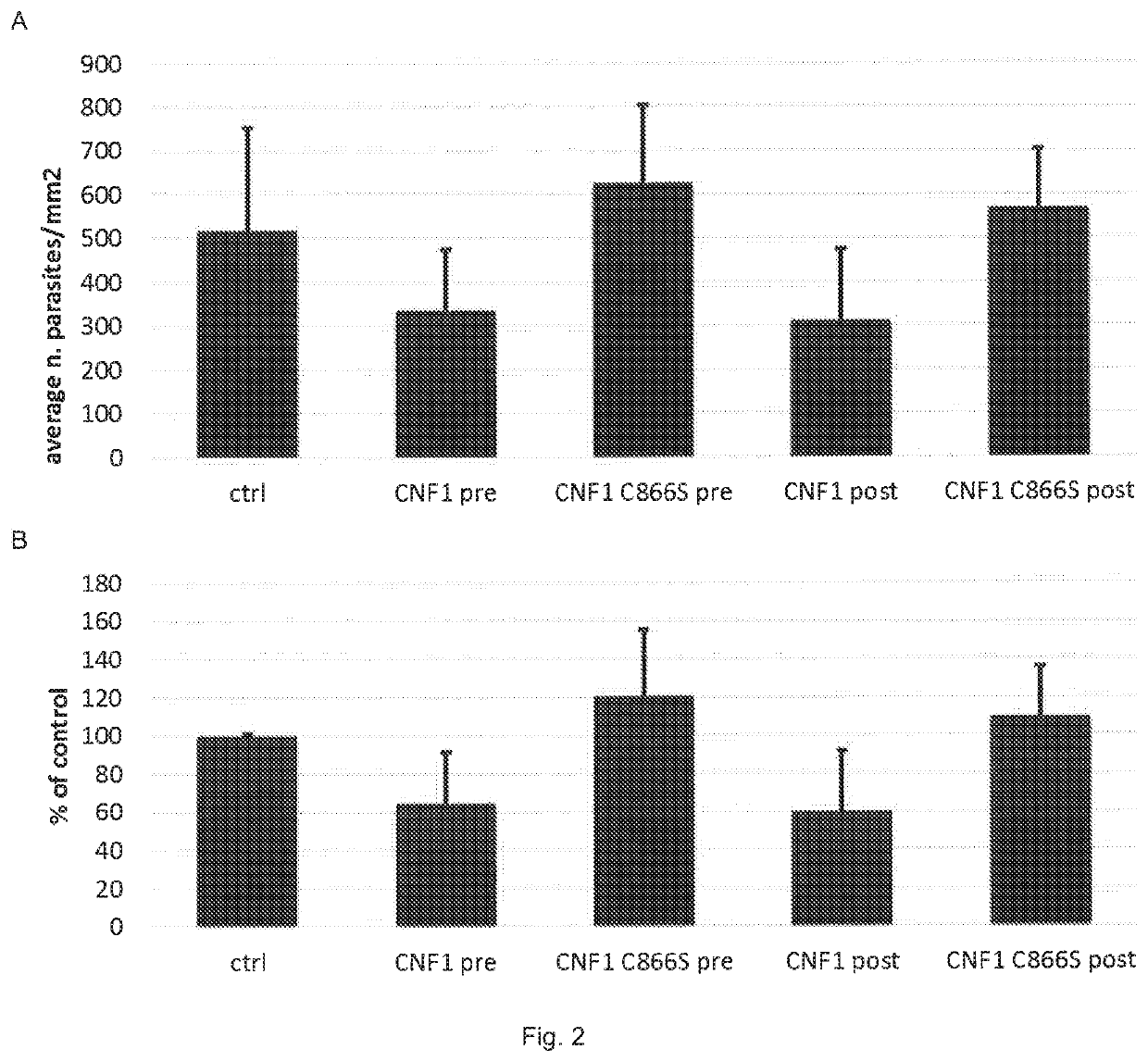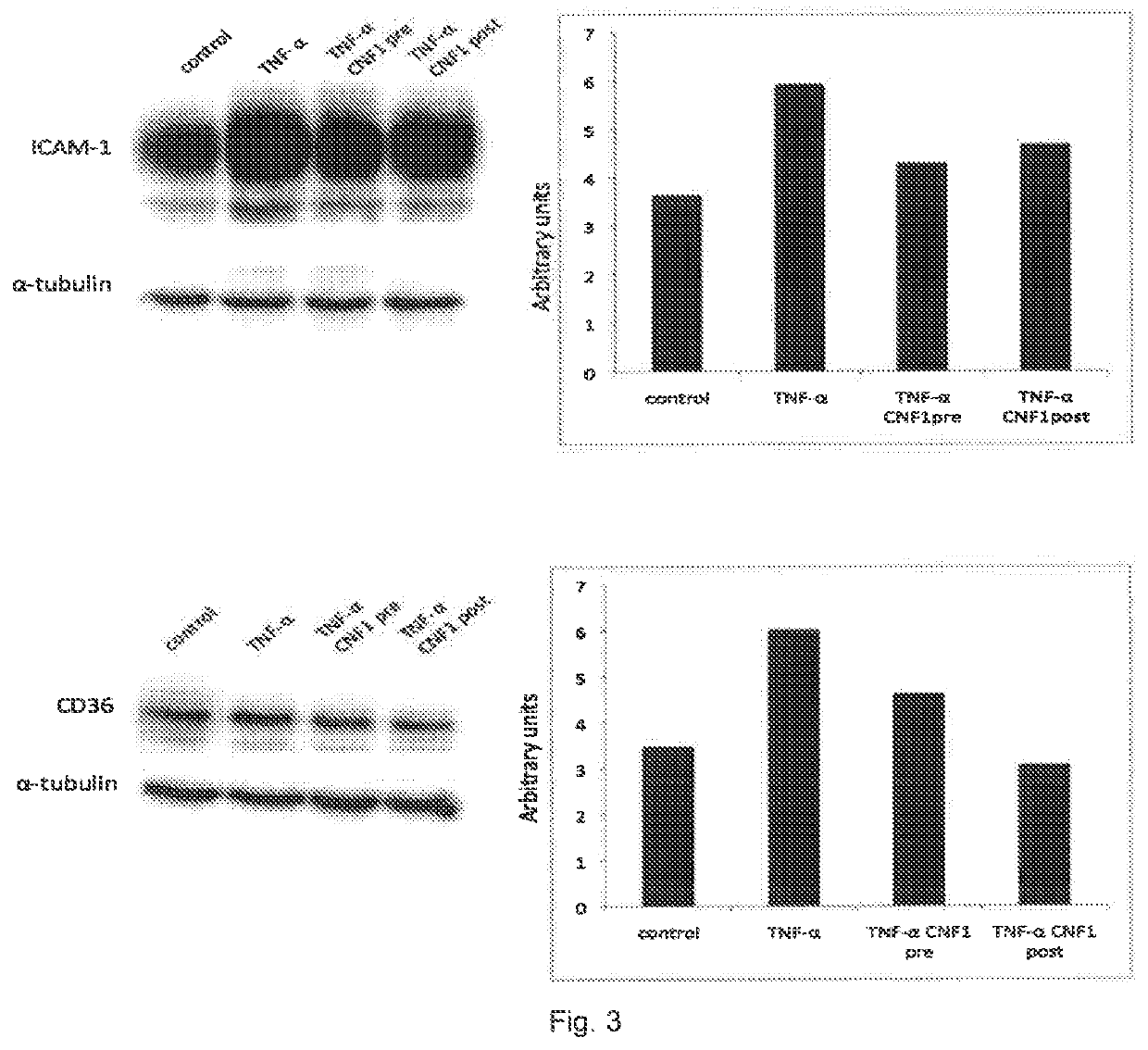New use of cnf1
a technology of cnf1 and cnf2, which is applied in the field of new use of cnf1, can solve the problems of interrupting the taking, and affecting the effect of treatment effect, so as to improve the effect of treatment, increase the effect of disease control and scarce adheren
- Summary
- Abstract
- Description
- Claims
- Application Information
AI Technical Summary
Benefits of technology
Problems solved by technology
Method used
Image
Examples
Embodiment Construction
[0028]As previously mentioned, in the summary of the present invention, the Authors of the invention have surprisingly discovered that the bacterial protein selected from CNF and / or DNT and / or fragments thereof or mixtures thereof that retain the active catalytic portion can be advantageously used in the prevention and / or treatment of malaria caused by Plasmodium falciparum.
[0029]In fact, the Authors of the invention have demonstrated that the bacterial proteins reported above (CNF and / or DNT), and as defined in the description and in the claims, prevent the adhesion of erythrocytes infected by Plasmodium falciparum to the endothelium and, above all, induce detachment of infected erythrocytes. Without wishing to be bound by theory, the Authors hypothesize that the effect of the above-indicated proteins on the binding of erythrocytes infected by P. falciparum to endothelial cells depends on a coordinated modulation of processes linked to cytoskeleton motility and plasticity. The rem...
PUM
| Property | Measurement | Unit |
|---|---|---|
| pH | aaaaa | aaaaa |
| volume | aaaaa | aaaaa |
| pH | aaaaa | aaaaa |
Abstract
Description
Claims
Application Information
 Login to View More
Login to View More - R&D
- Intellectual Property
- Life Sciences
- Materials
- Tech Scout
- Unparalleled Data Quality
- Higher Quality Content
- 60% Fewer Hallucinations
Browse by: Latest US Patents, China's latest patents, Technical Efficacy Thesaurus, Application Domain, Technology Topic, Popular Technical Reports.
© 2025 PatSnap. All rights reserved.Legal|Privacy policy|Modern Slavery Act Transparency Statement|Sitemap|About US| Contact US: help@patsnap.com



